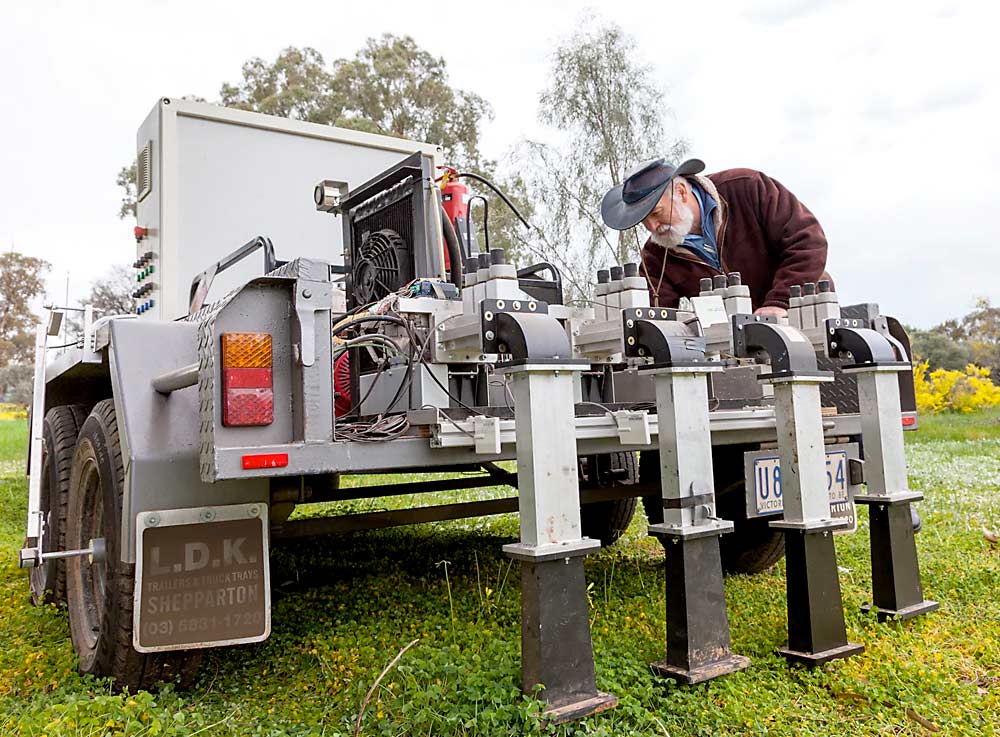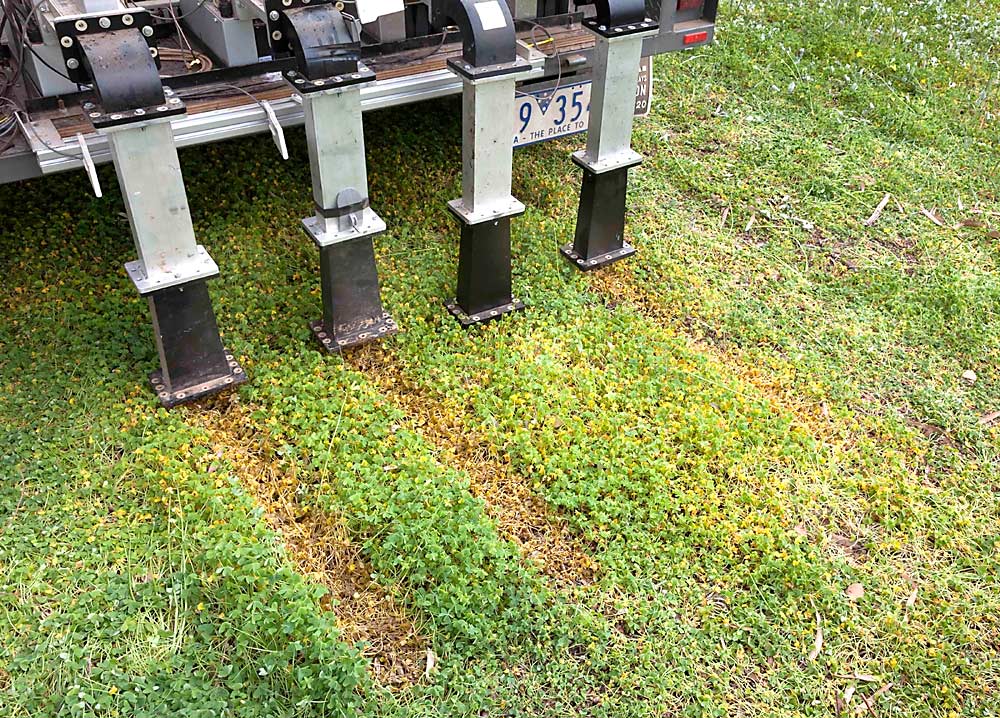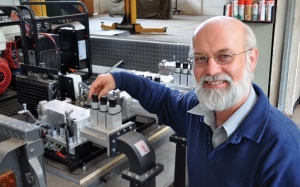
An Australian engineer invented a microwave-powered weed killer that cooks unwanted vegetation with electromagnetic energy. It’s on its way to commercialization.
Graham Brodie, a researcher at the University of Melbourne, shared results from vineyard trials with his machine that directs microwaves to vegetation on the ground, during a winter webinar hosted by the Washington State Grape Society and Washington State University.
The Growave, the name of the product and the company spun off through the university’s commercialization process, essentially cooks weeds, and many of the ungerminated weed seeds in the soil, as it passes over them, said Brodie, an industrial and electrical engineer with a specialty in microwave science. The technology is similar to a household microwave oven, but it’s towed behind a tractor. He just uses tubes to direct the electromagnetic energy downward over plants.
The microwave energy heats up the vegetation, creating internal steam until the cell walls break. Crackling, popping and hissing sounds emanate from the weeds in his demonstration videos.
“My farmer friends in Australia always tell me they like to hear their weeds suffering,” he said.

Brodie and his colleagues have tried the Growave about 1,000 times over wheat, rice and grasses in five different soil types and a wide array of climates. He has also tested it on weeds under vines, he said.
“It seems to be quite effective under vines without hurting the vines,” he said.
The microwave heat only travels so far into the ground, leaving the lower-reaching roots unharmed, while the trunk’s woody bark protects the vine, Brodie said. Soil core samples confirmed that.
The microwave also kills fungal and bacterial pathogens near the surface, he said. The machine does not sterilize the soil, however. Growers could replant in the same spot after a few hours of cooling, he said, and earthworms either escaped to the surface or stayed too deep to be affected.
His machine uses four 2-kilowatt microwave emitters, each about twice the power of a household microwave oven. At that power, operators travel about half a mile per hour. With stronger microwaves, they could speed up.
Brodie has been working on the prototype for 15 years or so and believes it’s ready to launch commercially. “We’re now at the stage for people to think it’s an interesting idea,” he said.
Michelle Moyer, a WSU extension viticulturist, invited Brodie to bring the Growave to Washington for trials and asked him if the microwaves could eliminate vine suckers. Many Washington growers try to weed and sucker at the same time. Brodie called that a surmountable technical problem of sending the microwave horizontally, but he hasn’t yet designed an applicator to do that.
Brodie is not a direct part of Growave, but he knows the company leaders intend to introduce the technology internationally, including in the United States, he said in an email with Good Fruit Grower.
Moyer believes the technology could work in the Northwest if it reaches the commercial stage in the United States.
“There is always feasibility,” Moyer said in a follow-up email with Good Fruit Grower. “There is no inherent reason why the technology wouldn’t work.”
Kevin Corliss, vice president of vineyards for Ste. Michelle Wine Estates, told Good Fruit Grower he likes the idea, too.
“Anything that gives us an alternative to burn-down herbicides is a good idea,” he said.
Weeds develop resistance to herbicides. Some chemicals, such as the glyphosate in Roundup, may end up prohibited.
Ste. Michelle already uses a similar technique on some of its organic blocks, with a propane applicator that heats up weeds, causing them to wilt without an actual flame. He would welcome a trial of the microwave weed killer in Washington.
“The theory makes a lot of sense,” Corliss said. •
—by Ross Courtney







Leave A Comment